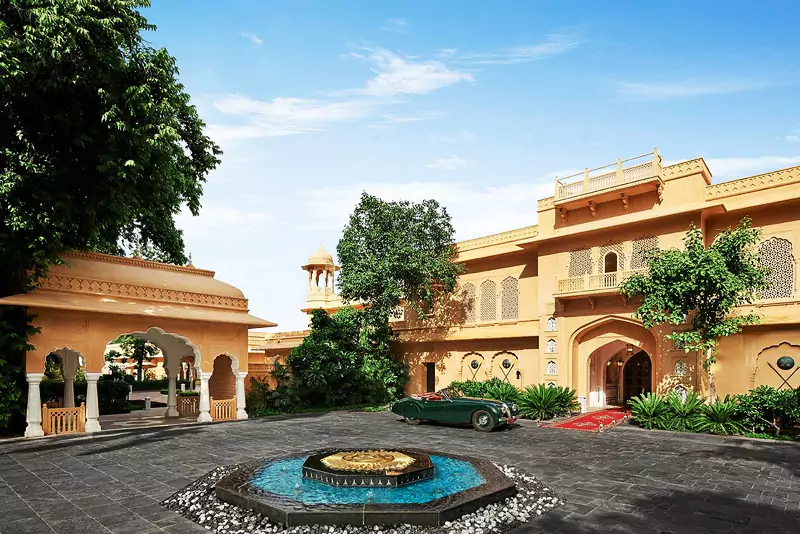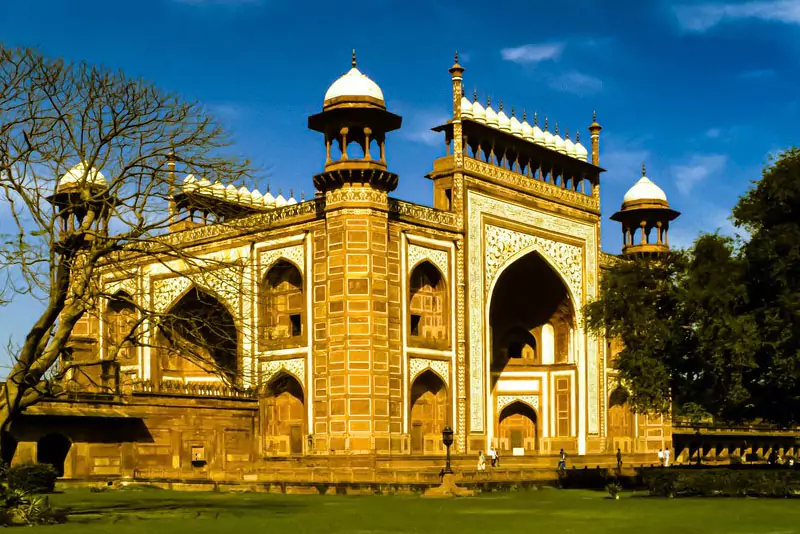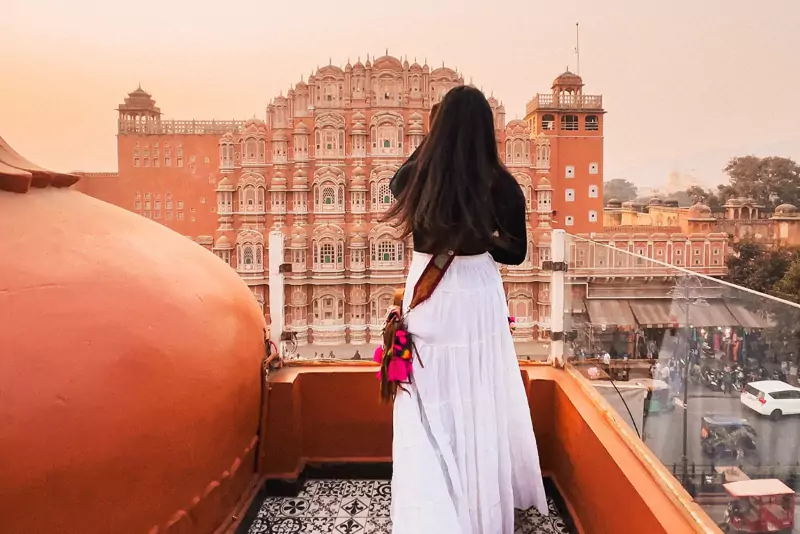Being the largest state in India by land area, Rajasthan—often referred to as the “Land of Kings”—is a vital pillar of the country’s rich cultural heritage. The state has played a significant role in preserving its historical legacy.
Recognizing its cultural and social importance, the United Nations Educational, Scientific and Cultural Organization (UNESCO) has declared 9 sites in Rajasthan as World Heritage Sites.
Jaisalmer Fort
Also known as the “Golden Fort”, Jaisalmer Fort gets its name from the golden-yellow glow of the sandstone used in its construction. It was built by Bhati Rajput ruler Rawal Jaisal.

Location: Fort Road, Dhibba Para, Manak Chowk, Amar Sagar Pol, Jaisalmer
Best Time to Visit: October to March
Timings: 9:00 AM to 6:00 PM
Entry Fee:
Indian Tourists: ₹50
Foreign Tourists: ₹250
Additional camera charges apply
Jantar Mantar, Jaipur
Jantar Mantar is an ancient astronomical observatory consisting of 19 instruments, including the Vrihat Samrat Yantra, Digamsha, Nadivalaya, and more. It is also home to the world’s largest sundial.

Location: Gangori Bazaar, J.D.A. Market, Pink City, Jaipur
Best Time to Visit: October to February
Timings: 9:00 AM to 4:30 PM
Entry Fee:
Indian Visitors: ₹50
Foreign Visitors: ₹200
Chittorgarh Fort
Chittorgarh Fort was the ancient capital of Mewar. The iconic Vijay Stambh (Victory Tower) is the most recognizable symbol of the fort. Its massive walls, serene lakes, and majestic architecture make it truly unique.

Location: Chittorgarh City
Best Time to Visit: December to February, June to September
Timings: 9:00 AM to 6:00 PM
Entry Fee:
Indian Visitors: ₹50
Children: ₹25
Foreign Visitors: ₹200
Amber Fort
Amber Fort is a stunning example of the fusion of Hindu and Islamic architecture. The fort is especially famous for its Sheesh Mahal (Mirror Palace), known for its intricate mirror work and artistic beauty.

Location: Devisinghpura, Amer, Jaipur
Best Time to Visit: November to January
Timings:
Day Visit: 9:00 AM to 5:00 PM
Night Visit: 7:00 PM to 10:00 PM
Entry Fee:
Indian Visitors: ₹50
Foreign Visitors: ₹550
Special discounts available for students
Ranthambore Fort
Ranthambore Fort is located within the Ranthambore National Park. Built by the Chahamana (Chauhan) dynasty, the fort is home to several Hindu and Jain temples, reflecting its historical and spiritual significance.

Location: Ranthambhore Road, Vigyan Nagar, Sawai Madhopur
Best Time to Visit: November to February
Timings: 6:00 AM to 6:00 PM
Entry Fee: Free of charge
Kumbhalgarh Fort
Kumbhalgarh Fort is renowned for its 36-kilometer-long wall, making it the second longest wall in the world after the Great Wall of China. It is also famous as the birthplace of Maharana Pratap, the legendary Rajput warrior.

Location: Rajsamand District, Western Aravalli Range
Best Time to Visit: September to March
Timings: 9:00 AM to 6:00 PM
Entry Fee:
Indian Visitors: ₹15
SAARC/BIMSTEC Countries: ₹15
Foreign Visitors: ₹200
Gagron Fort
Gagron Fort is a water fort (Jaldurg), uniquely surrounded by water on all sides. It remained under the control of the Khinchi Rajputs for three centuries before coming under the rule of Sher Shah Suri and later Emperor Akbar.

Location: Jhalawar, Hadoti Region
Best Time to Visit: August to March
Timings: 9:00 AM to 6:00 PM
Entry Fee: Free of charge
Keoladeo National Park, Bharatpur
Formerly a royal hunting ground, Keoladeo National Park is now a protected bird sanctuary. It is home to a wide variety of species including birds, fish, snakes, and many other forms of wildlife.

Location: Bharatpur
Opening Hours:
April to September: 6:00 AM to 6:00 PM
October to March: 6:30 AM to 5:30 PM
Ticket Charges:
Indian Visitors: ₹75
Foreign Tourists: ₹500
Videography: ₹600 (Indians) / ₹900 (Foreigners)
Guide Charges: ₹250 per hour
Bicycle / Binocular Rental (per day): ₹60 / ₹100
Additional Activities:
Rickshaw Ride: ₹200 per hour
Bicycle Safari: ₹100 per hour
Walking Safari: Free (only park entry fee applicable)
Boating Safari: ₹75 per person
Availability: July to September (subject to water levels)
The City of Jaipur
On 6th July 2019, UNESCO declared Jaipur as a World Heritage Site. Known as the “Pink City”, Jaipur is one of the first planned cities in India, celebrated for its rich history, vibrant architecture, and cultural significance.

Location: Northwestern India, Capital of Rajasthan
Best Time to Visit: October to March
What Are the Criteria for UNESCO World Heritage Sites?
To be declared a World Heritage Site, a place must meet one or more of the following ten criteria set by UNESCO:
1. Exhibits exceptional natural beauty or represents significant natural phenomena.
2. An outstanding example of human creative genius.
3. A unique example of settlement, land use, or sea use representing a specific culture or civilization.
4. Reflects the interchange of human values over time or across regions.
5. An example of architecture or technology that represents an important stage in history.
6. Bears testimony to a cultural tradition or a vanished civilization.
7. Contains natural habitats crucial for biodiversity conservation.
8. A clear example of ongoing ecological and biological processes.
9. Demonstrates significant aspects of Earth’s history, geology, or geomorphology.
10. Represents a living cultural tradition or way of life that continues to evolve.










